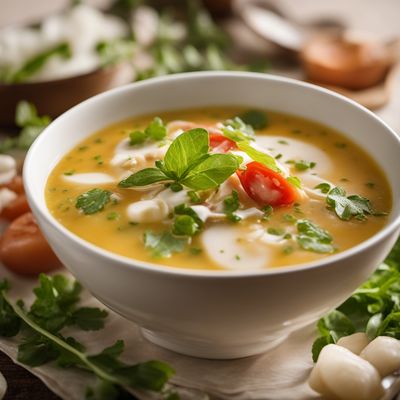
Ingredient
Tropical root and tuber vegetable dishes
Exotic Roots: Unveiling the Vibrant World of Tropical Root and Tuber Vegetable Dishes
Tropical root and tuber vegetable dishes encompass a wide array of flavorful ingredients, including yams, taro, cassava, and sweet potatoes. These vegetables are known for their starchy texture, earthy flavors, and vibrant colors that add depth and complexity to various dishes. Whether roasted, boiled, mashed, or fried, they bring a delightful twist to both savory and sweet preparations.
Origins and history
Tropical root and tuber vegetables have been a staple in tropical regions for centuries, playing a significant role in the local cuisines and cultures. These vegetables are native to regions like Africa, Asia, and the Caribbean, where they have been cultivated and consumed for generations. They have also become popular in international cuisines, showcasing their versatility and adaptability in different culinary traditions.
Nutritional information
Tropical root and tuber vegetables are packed with essential nutrients, providing a good source of dietary fiber, vitamins, and minerals. They are low in fat and cholesterol, making them a healthy addition to a balanced diet. These vegetables are also rich in antioxidants, which help protect the body against oxidative stress and inflammation.
How to select
When selecting tropical root and tuber vegetables, look for firm and unblemished specimens. Avoid vegetables with soft spots, mold, or signs of decay. Choose those that feel heavy for their size, indicating freshness. Additionally, opt for vegetables with vibrant colors, as this often indicates optimal ripeness and flavor.
Storage recommendations
To maintain the freshness and quality of tropical root and tuber vegetables, store them in a cool, dark, and well-ventilated place. Avoid storing them in the refrigerator, as the cold temperature can negatively affect their texture and flavor. Keep them separate from other produce to prevent moisture buildup and spoilage. Some vegetables, like sweet potatoes, can be stored for several weeks, while others, like yams, should be consumed within a few days of purchase.
Preparation tips
Tropical root and tuber vegetables can be prepared in various ways, depending on the desired dish. They can be roasted, boiled, mashed, fried, or even used in baking. Roasting brings out their natural sweetness and enhances their flavors, while boiling or steaming helps retain their vibrant colors and nutrients. Mashing them creates a creamy and comforting texture, perfect for side dishes or fillings. Additionally, tropical root and tuber vegetables can be used in soups, stews, curries, and even desserts, showcasing their versatility in both savory and sweet applications.
Culinary uses
Tropical root and tuber vegetables are widely used in a variety of culinary creations. They are commonly featured in dishes like curries, stews, soups, and stir-fries, adding depth and heartiness to these preparations. They can also be used as a base for vegetarian or vegan dishes, providing a satisfying alternative to meat. In addition, tropical root and tuber vegetables are often incorporated into traditional desserts, such as sweet potato pie or cassava cake, where their natural sweetness shines through.
Availability
Tropical root and tuber vegetables are commonly available in tropical regions around the world. They are cultivated and consumed in countries like Nigeria, Ghana, India, Thailand, Indonesia, and various Caribbean nations. Additionally, these vegetables can be found in international markets or specialty grocery stores in other parts of the world, allowing people to explore their unique flavors and culinary possibilities.
More ingredients from this category

Fried or extruded cereal, seed or root-based products
Crunchy Delights: Exploring Fried or Extruded Cereal, Seed, or Root-Based Products

Soups and salads
Savory Creations

Spoonable desserts and ice creams (generic)
Indulgent Frozen Delights

Dishes, incl. Ready to eat meals (excluding soups and salads)
Convenience Meets Flavor: Exploring Ready-to-Eat Meals